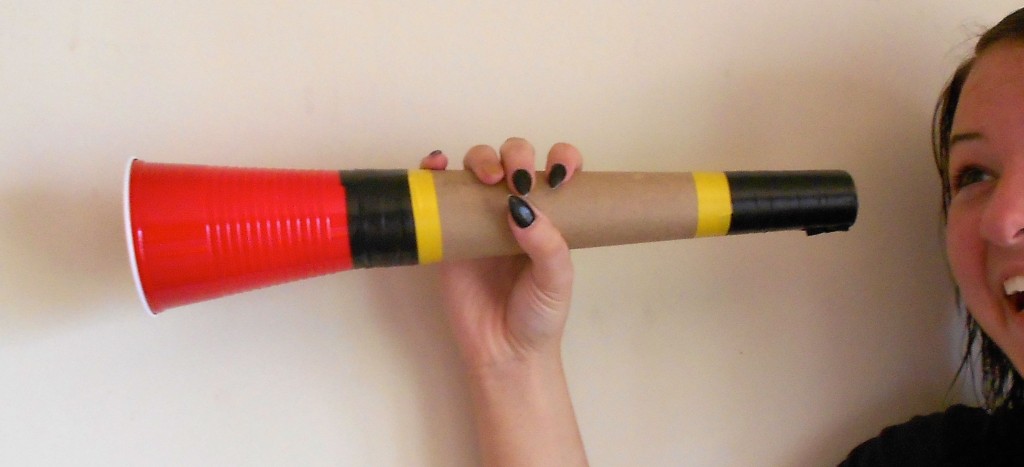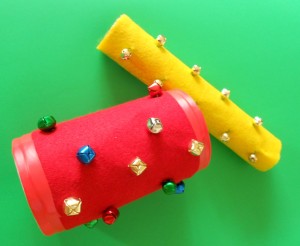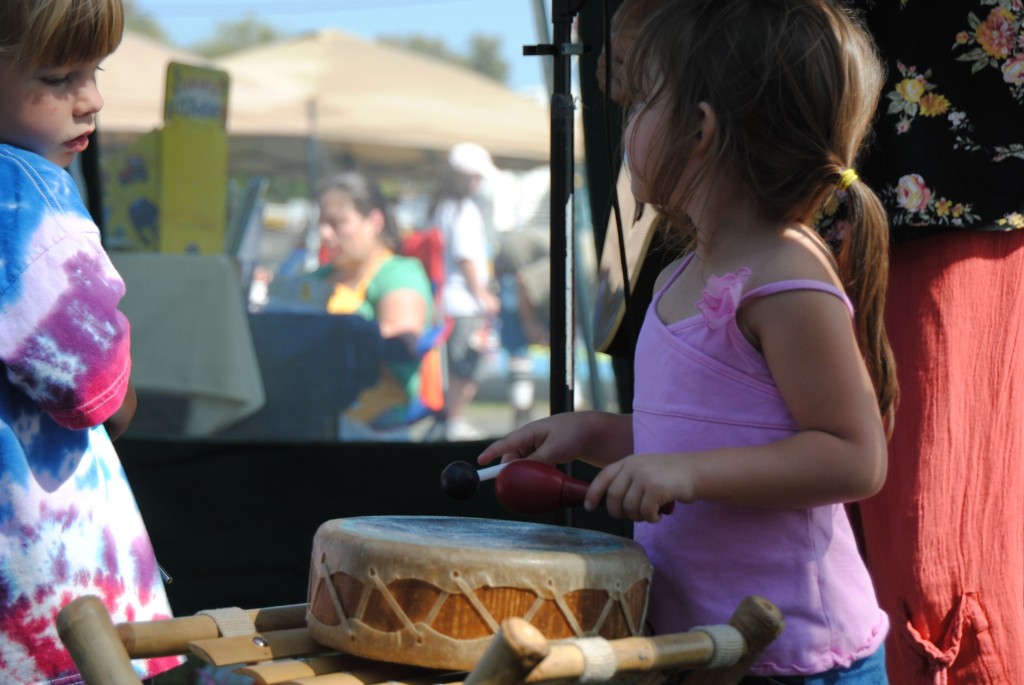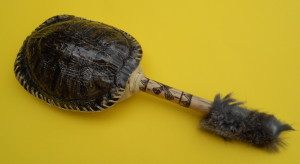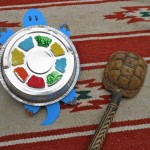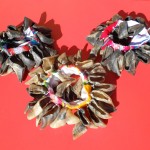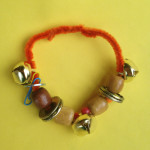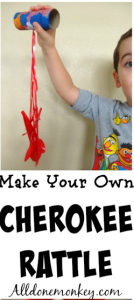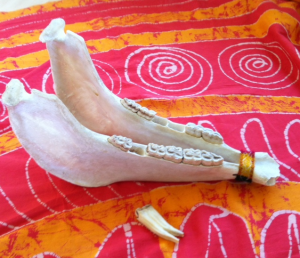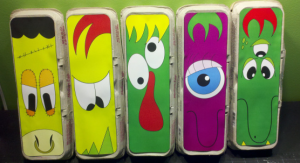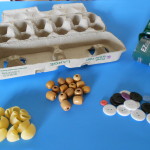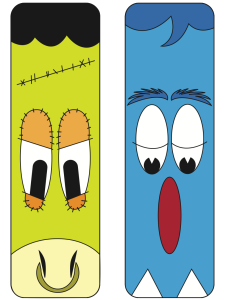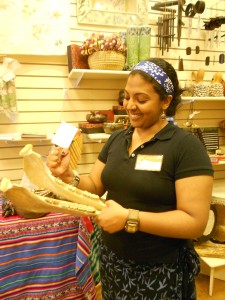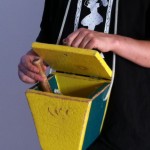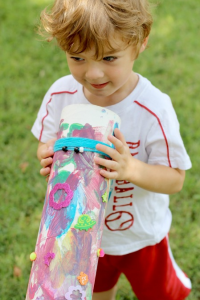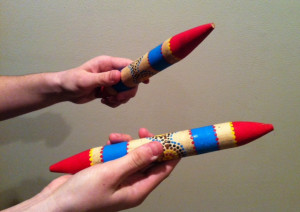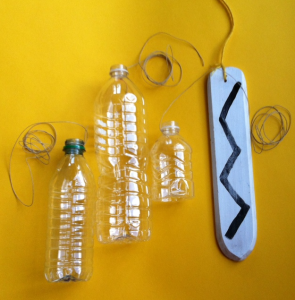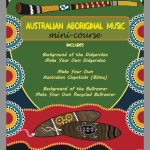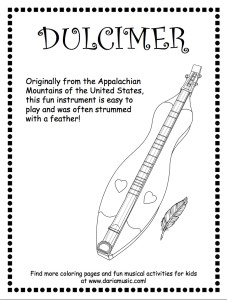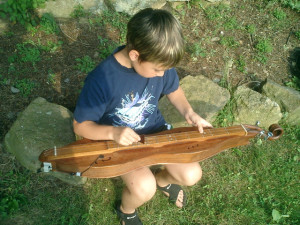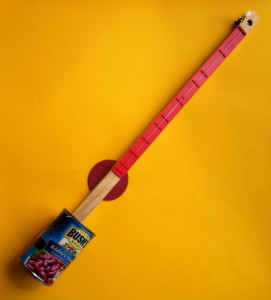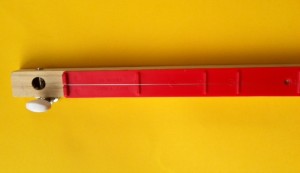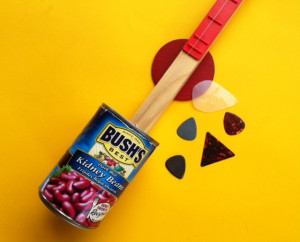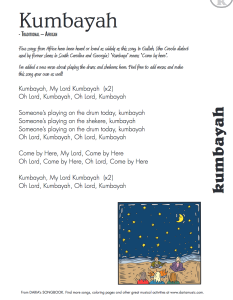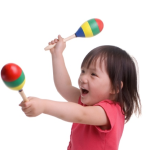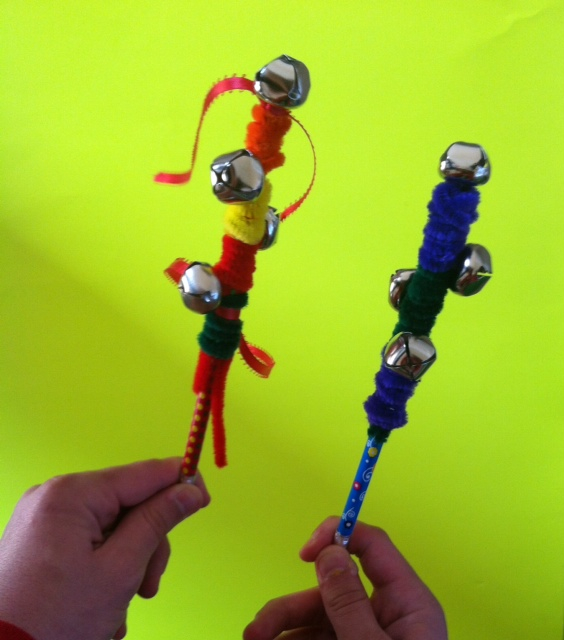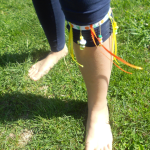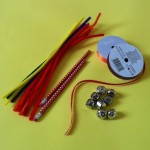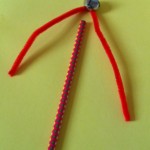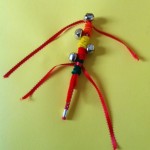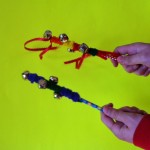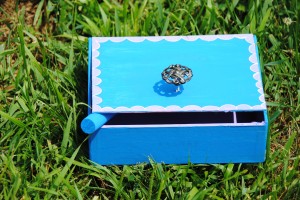 It’s almost a cliche. A child is given a special present and they prefer to play with the box!
It’s almost a cliche. A child is given a special present and they prefer to play with the box!
But, did you know that in Peru, there are two different types of boxes that are actually used as instruments? We’ve already shared a post about a cajón, a box drum from Afro-Peruvian culture that you can make at home (link below). Now we’d like to show you another box instrument called the cajita. Making and playing a cajita is a wonderful way to develop motor skills, explore rhythms, discover new music and just plain have fun!
WHAT IS A CAJITA?
The cajita is a small, hexagonal box that comes from Afro-Peruvian culture. Originally, it was used to collect donations in Catholic churches. The altar boys wore the donation box around their necks as they collected the offerings. Then; after they removed the money intended for the church, they used the box as a percussion instrument.
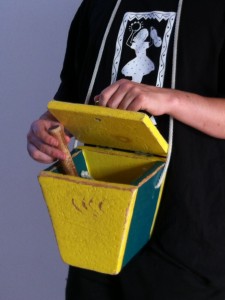 How did they make music with a cajita? They opened and closed the lid for one sound. They took a small stick and tapped the sides and top, for another sound. They opened the lid and “stirred” the inside for still another type of percussion. And then they mixed all those different sounds together.
How did they make music with a cajita? They opened and closed the lid for one sound. They took a small stick and tapped the sides and top, for another sound. They opened the lid and “stirred” the inside for still another type of percussion. And then they mixed all those different sounds together.
Since it might be a bit hard to imagine, here’s a short video with two cajitas and one cajón (box drum) that will demonstrate what it looks and sounds like.
MAKING A HOMEMADE CAJITA
Making a wooden box cajita requires special materials as well as woodworking tools and skills. A bit easier to create is a cigar box cajita which is sturdy enough to be played like the real thing, but can be made from some basic materials and supplies found around almost any home.
Here’s what you need to create a cigar box cajita.
SUPPLIES
Cigar box
Small knob and matching screw (knobs from kitchen cabinets or small dressers work perfectly)
Hammer and nail or awl tool (to make a hole for the knob to be inserted in lid)
Two dowels or sticks – about 8” in length
Materials for decorating such as paint, construction paper, stickers, glitter and glue
DECORATE A HOMEMADE CAJITA
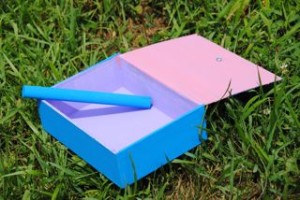 If you’d like to decorate your cajita, begin this project by personalizing the cigar box. You can paint it, decoupage it, add stickers, construction paper or glitter and glue to make it unique. Since you’ll be opening and closing the lid, you may want to decorate the inside as well as the outside.
If you’d like to decorate your cajita, begin this project by personalizing the cigar box. You can paint it, decoupage it, add stickers, construction paper or glitter and glue to make it unique. Since you’ll be opening and closing the lid, you may want to decorate the inside as well as the outside.
Next, add the knob so you can easily lift the cajita’s lid up and down. To do this, the adult can help with the process of hammering a small nail or using an awl to pierce a hole in the lid of the box. Position that hole in the exact center of the box, about an inch or so away from the edge of the lid that opens up. Once the hole is created, it’s easy to insert the knob in the top of the box and use the screw to tighten it into place. Now you should be able to open and close the lid of the box easily.
Finally, cut two wooden dowels. One will weigh down your box so you can play your instrument without the cajita bouncing up and down. The other will be the playing stick that you use to tap and play your instrument. If possible, cut the first dowel to a length just a bit short of the inner width of the box. Glue the dowel in place in the inner front of the box and leave it to dry. In the meantime, cut and decorate your second dowel. This one can be any length that is comfortable to hold in your hand while playing.
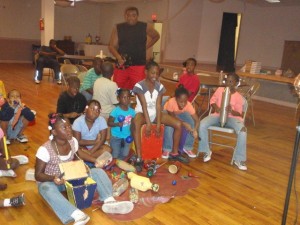 TIME TO JAM
TIME TO JAM
Now the musical fun begins. If you’ve watched the video above and are ready to dive right in, then skip this section. If you prefer some playing tips, here are some good suggestions to get you started.
Get to know your cajita by tapping the sides and the front and making a rhythm pattern. Notice how each sound is a bit different. Try something like “front, front, side. Front, front side.” Try a similar pattern with the sides and the top. Later, add the sound of the lid opening and closing. Since this can sometimes feel like “rubbing your stomach and patting your head”, it’s best to start with simpler patterns and then work up to more complicated ones. If working with younger children, it can be good to let them explore the instrument before trying to play specific patterns.
You can also put on any type of music and allow your child to create a beat that goes along with it.
A CAJITA JAM AS A GROUP
After getting the hang of creating rhythms with a cajita, you can play as a group, with several cajitas or with different instruments playing together as well. This can be a fun way of building rhythm in a classroom or a homeschool setting because each child or person hears how their musical part plays an important role in the overall beat.
An easy way to start a jam is to have one person – like the cajita player – play a very simple pattern such as opening and closing the lid. The next person adds another sound, the third and forth, add their own simple parts. If you check out this jam, you’ll see how the rhythm starts on one instrument (a quijada jawbone), the cajita is added next and finally, a large cajón (or box drum) joins in.
Links and Resources
What Us A Cajita? https://www.teacherspayteachers.com/Product/What-Is-A-Cajita-Latin-American-Percussion-Instrument-1388694
Make Your Own Cajón Box Drum – Free From TeachersPayTeachers
http://www.teacherspayteachers.com/Product/The-Cajon-Make-And-Play-Your-Own-Box-Drum-1236616
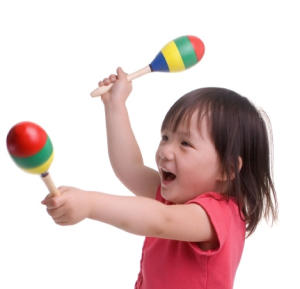 How will you be merry-making with your kids this New Year’s Eve? Here are five fun ways to make a merry musical start in 2015!
How will you be merry-making with your kids this New Year’s Eve? Here are five fun ways to make a merry musical start in 2015!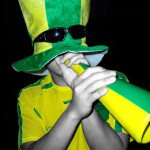 Eve. Find a free craft pdf with step-by-step instructions here: http://www.teacherspayteachers.com/Product/The-Vuvuzela-Make-Play-Your-Own-South-African-Stadium-Horn-1242716
Eve. Find a free craft pdf with step-by-step instructions here: http://www.teacherspayteachers.com/Product/The-Vuvuzela-Make-Play-Your-Own-South-African-Stadium-Horn-1242716